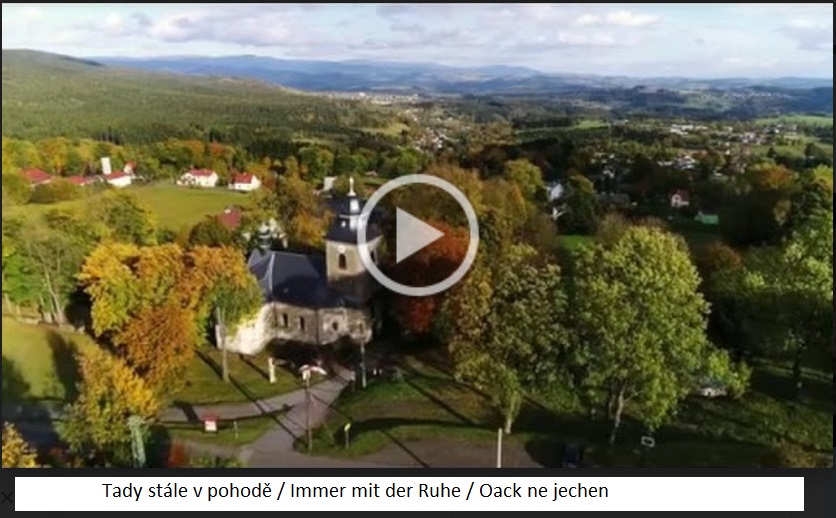Städtischen Museen Zittau / Zittau City Museums
Welcome to Zittau Museums. We invite you to a virtual tour of the oldest city museum in the Euroregion Neisse and Saxony. For more than 450 years, Zittau has been collecting rich collections for the public. We present our treasures in unique historical spaces, but in modern ways and using modern technologies. Let's delve into history, art and culture in the fascinating Triple Territory of the Euroregion Neisse. The museum's greatest treasure is two large fasting cloths - unique in Germany, important for the whole of Europe. Be surprised!
Cultural-historical museum Franciscan monastery.
The Museum of Cultural History The Franciscan Monastery has a rich history, which is also reflected in the constructional form of the complex of buildings where it resides. In the main building there are permanent exhibitions and there is also a museum entrance hall with a cash register, museum shop and information center. Part of the original cloister, which used to surround the entire inner courtyard of the monastery, is the main building connected with Heffte's house. There are major exhibition spaces, permanent collections and a cabinet of curiosities. The diverse history of the monastery and its importance as the cultural center of Upper Lusatia is in harmony with the current use of the museum building and offers visitors the opportunity to discover the history of the unique region.
The history of civic museums begins in 1709, when the City of Zittau opened a cabinet of curiosities belonging to the library of the Zittau Council in the former Franciscan monastery. The first museum exhibit arrived in Zittau from Vienna in 1564 and it was a column clock. This ranks Zittau museums among the oldest burgher museums in Central Europe. The Zittau Museum was founded in 1854 as the oldest burgher museum in Saxony. Especially the Zittau historian Kristián Adolf Pescheck had great credit for the collection. Since then, the collections have been constantly expanding and today count more than 35,000 inventory items.
Museum of the Church of the Holy Cross.
This museum houses the Great Zittau Lent in the largest museum showcase in the world. The canvas was originally used to cover the altar in Lent. It was founded in 1472 and displays 56 biblical motifs on 56 m2.
Small Zittau Lent
It was founded in 1573 and depicts the Crucifixion of Christ, framed by 30 symbols of martyrdom.
Solo exhibitions.
They are, in contrast to permanent exposures, periodically varied. In addition to exhibiting their own collections of museums otherwise housed in depositories, they also devote themselves to new acquisitions, but the wider scope, especially in the Euroregion Neisse, is not an exception.
Museum pedagogy
Museum pedagogy is devoted to all age groups of the population. The offer is enriched by children's birthday parties, tours of seasonal exhibitions and permanent exhibitions, as well as workshops for children and adults. Themed events are also possible
City archive
The historical town archive preserves written sources of Zittau history.
Museum of Nature „Dr. Kurt Heinke '
The museum is dedicated to important dates and facts of the Zittau region.
News
Visiting hours, contacts, lectures, openings… will be updated.
Library
The mother of the Zittau museums is the historical town hall library, whose book collection has largely become the historical collection of today's Christian Weis Library. Today's museum library is mainly research and work.
Monastery courtyard
it was originally a cloister. After the demolition of the northern wing of the monastery, a cemetery with a number of artistically valuable tombs was built here in the 17th and 18th centuries.
The place is linked to the original monastery courtyard. The cemetery was similar to the one in Campo Santo, Italy, which is characterized by arcades and burial halls. While in the upper parts there are decorative tombstones, the burial chambers are located in the underground part of the tombs.
With its wealth of shapes and architecture, the Zittau Monastery Court is a very unique example of a bourgeois Protestant burial culture, which bears witness not only to the sincere faith in salvation but also to the very high demands of the townsmen for representation even after death.
The first tomb was built in 1675 (No. 21), the last in 1723 (No. 1). Despite the formal regularity of the entire premises, each tomb retains its architectural autonomy in the design and technical solution according to the will of the builder.
The buildings adjacent to the Klosterkirche, the former Franciscan monastery, the Heffter building and several others house the Zittau museums. If we are talking about the museum, we cannot forget one of the most important monuments of Zittau. She is the Zittau Lent. Precious textile works of art are exhibited in a nearby Museum of St. Crosses (Museum Kirche zum Heiligen Kreuz) and Museum Franziskanerkloster
Large Lent (56 m2) shows 90 biblical motifs, Small Lent (15 m2) adorns the biblical theme Crucifixion







